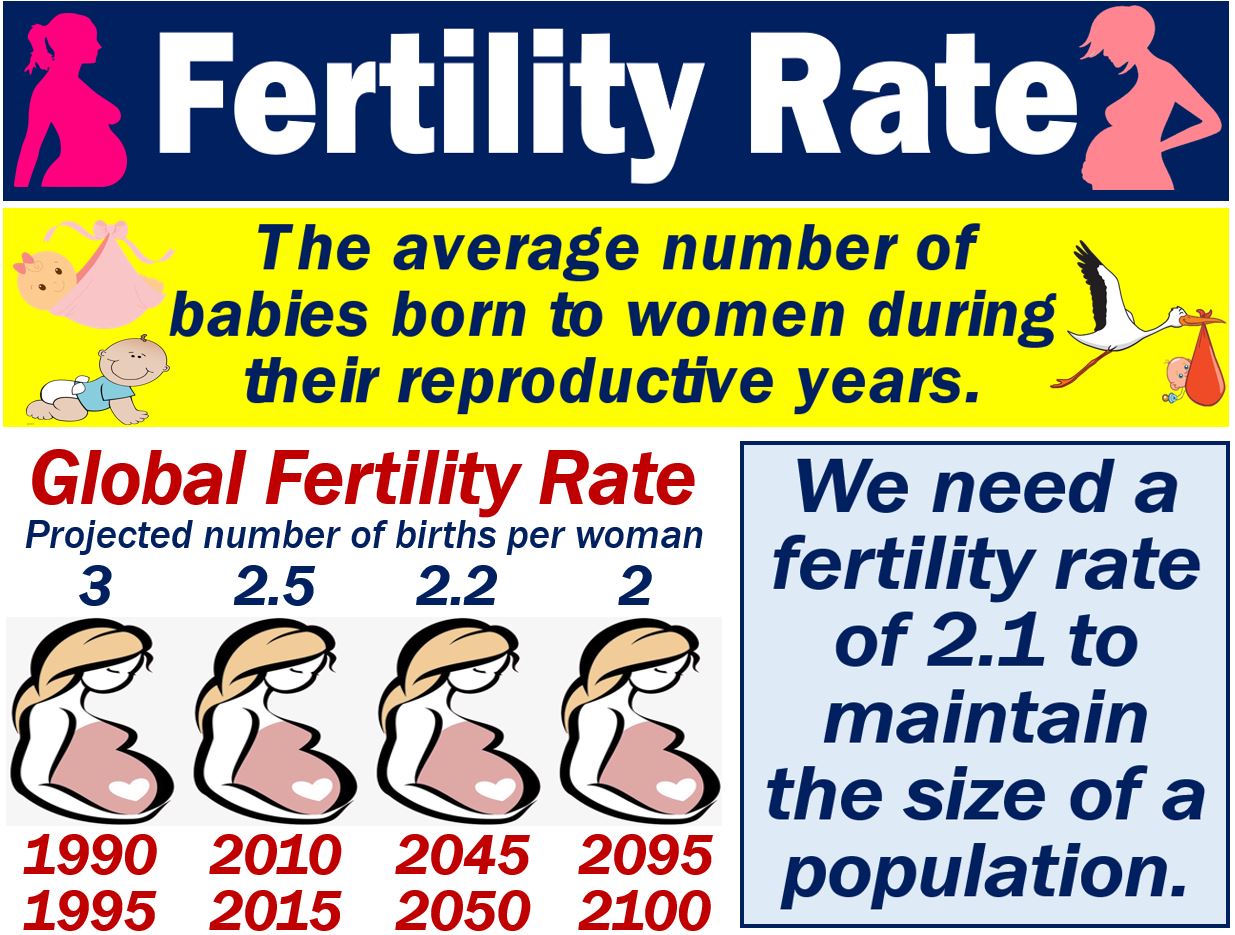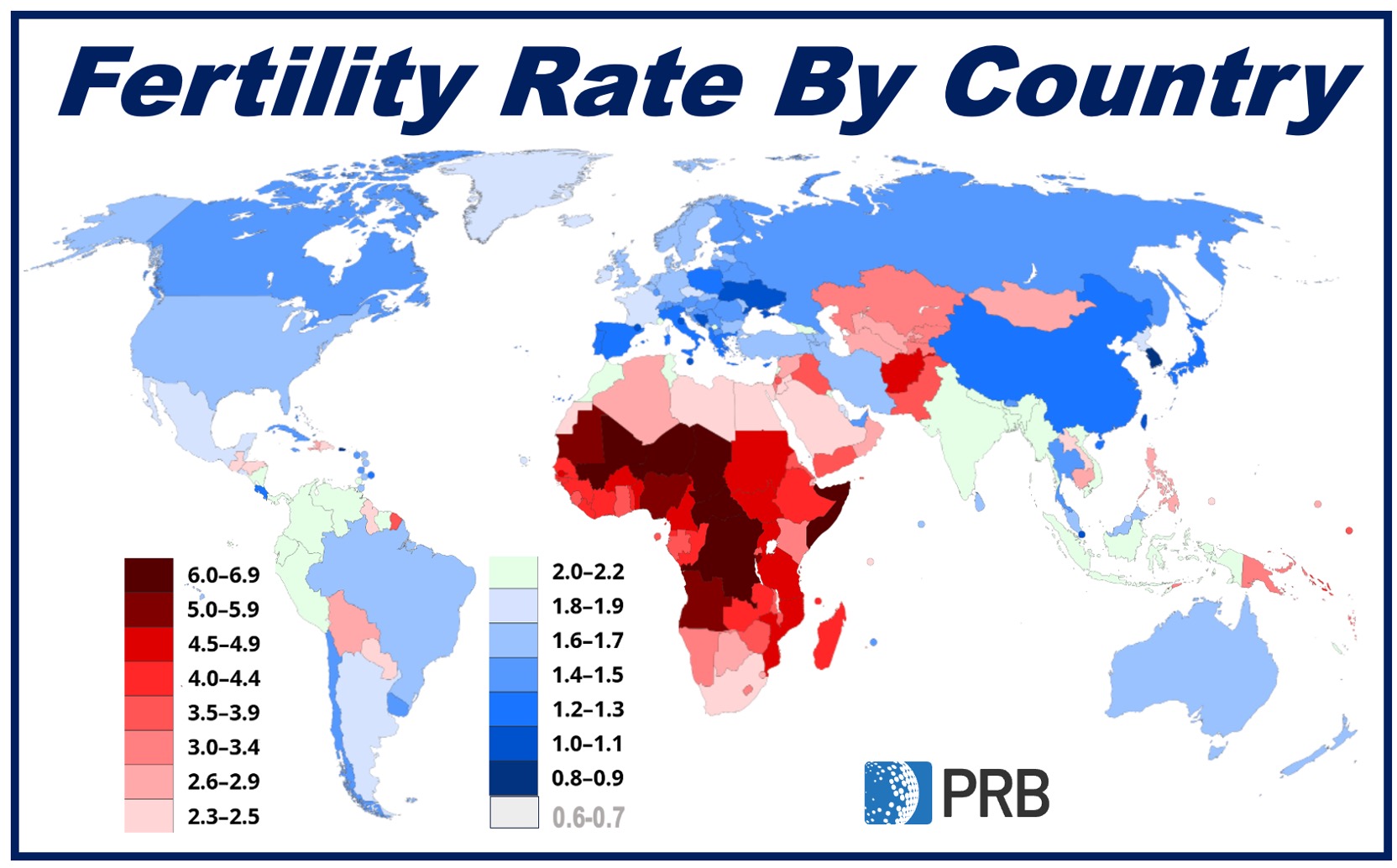The term Fertility Rate refers to the average number of babies born to females during their reproductive years. In other words, the total number of children that would be born to each human female if she lived to the end of her childbearing years. We get a country’s fertility rate by summing the single-year age-specific rates at a given time.
We can also use the terms Total Fertility Rate (TFR) and Absolute/Potential Natality.
TFR is the single most important factor in any country’s population growth. Another factor is, for example, in the advanced economies, immigration.
Life expectancy is also a factor that influences a country’s total population. In this context, life expectancy refers to how long we expect the people in a country or area to live.
Advancements in healthcare and quality of life have significant impacts on both fertility and life expectancy trends globally.

Ideal fertility rate
For a country to maintain its population, women, on average, should have 2.1 children. Those children should survive to at least the age of fifteen.
The figure of 2.1 children assumes that there is no emigration or immigration.
The United States, United Kingdom, and other advanced economies can maintain their populations with relatively low TFRs. This is because they have high levels of immigration, i.e., many people come from abroad to live there permanently.
Birth vs. fertility rate
Do not confuse birth rates with fertility rates. Many online dictionaries explain birth rate with the same meaning as fertility rate – this is a mistake!
Birth Rate
Birth rate is the number of live births per 1,000 women in the total population. We usually calculate this figure on an annual basis.
In 2016, the average birth rate globally was 18.5 births per 1,000 total population.
If a country has a very low birth rate, it has to deal with an aging population, i.e., a growing proportion of elderly people. Japan has the world’s lowest birth rate.
Fertility rate
TFR is the average number of babies that would be born to a woman during her fertile years. In other words, the number of babies, on average, born to women aged between about 15 and 49.
The rate only includes women who survive at least through the end of their reproductive lives.

Fertility on a personal level
On a personal level, a person’s fertility refers to their ability to reproduce.
Difficulties getting/staying pregnant
In the United States, approximately ten percent of all women aged between 15 and 44 have difficulty either getting or staying pregnant. Problems with ovulation are the main cause of infertility among women. Fibroids, endometriosis, and pelvic inflammatory disease are other common causes.
Male sperm count
Varicocele, when the veins in a man’s testicle(s) are too large, can affect the shape or number of sperm, leading to male infertility. A low sperm count and sperm that are not moving properly are the main causes of male fertility.
Options for couples
Couples who have fertility problems have a number of options, including IVF, surrogacy, and adoption. Before deciding to undergo any medical procedure, you should first gain a better understanding of what it is and what it involves.
Fertility clinics usually use the term IVF success rate to talk about how successful treatment is. Live birth rate is considered as the single most important IVF success rate. Finally, women have a baby through IVF, that is the most important outcome.
Additionally, advancements in reproductive technology and genetics are continually shaping the field of fertility, offering new prospects for those facing challenges.
Compound phrases with ‘fertility rate’
A compound phrase is a term that consists of two or more words. ‘Fertility rate’, for example, is a compound phrase. There are many 3-word compound phrases containing the term ‘fertility rate.’ Let’s have a look at two of them:
National Fertility Rate
The average number of children born to women of reproductive age within a specific country.
For example: “The ‘national fertility rate’ is a critical indicator for a country’s future population trends.”
Adjusted Fertility Rate
A fertility rate modified for factors like age distribution or population structure.
For example: “Demographers use the ‘adjusted fertility rate’ to get a more accurate picture of fertility trends over time.”
